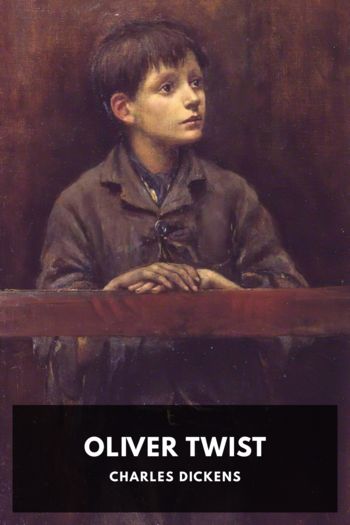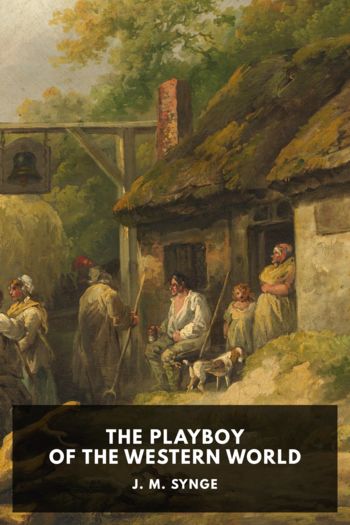Genre Other. Page - 288

Description
Eugene Onegin is bored: bored of the city, of parties, and of the superficial St. Petersburg social scene. So when a newly-deceased uncle leaves him his country mansion, he jumps at the chance to play the rural lord. There he meets his new neighbours Lenski, a young poet and stark contrast to Onegin’s affected nonchalance, and Tattiana, a dreamy but introverted romantic, and triggers a set of events with tragic consequences.
Serialized over the course of seven years starting in 1825, Pushkin’s novel in verse was and is a huge influence on Russian literature. Its unusual verse structure combined with Pushkin’s own commentary on the social canvas of the time has meant that it has remained relevant and read to this day. Eugene Onegine has been translated into many different languages, and into many different formats including successful operas and films.

Description
William Sydney Porter, known to readers as O. Henry, was a true raconteur. As a draftsman, a bank teller, a newspaper writer, a fugitive from justice in Central America, and a writer living in New York City, he told stories at each stop and about each stop. His stories are known for their vivid characters who come to life, and sometimes death, in only a few pages. But the most famous characteristic of O. Henry’s stories are the famous “twist” endings, where the outcome comes as a surprise both to the characters and the readers. O. Henry’s work was widely recognized and lauded, so much so that a few years after his death an award was founded in his name to recognize the best American short story (now stories) of the year.
This collection gathers all of his available short stories that are in the U.S. public domain. They were published in various popular magazines of the time, as well as in the Houston Post, where they were not attributed to him until many years after his death.

Description
Cicero composed these discourses while in his villa in Tusculum as he was mourning the death of his daughter, in order to convey his philosophy of how to live wisely and well. They take the form of fictional dialogues between Cicero and his friends, with each one focusing on a particular Stoic theme. The first, “On the Contempt of Death,” reminds us that mortality is nothing to be upset about. The second, “On Bearing Pain,” reassures us that philosophy is a balm for pains of the body. The third and fourth, “On Grief of Mind” and “Other Perturbations of the Mind,” say that this extends also to mental anguish and unrest. The last, “Whether Virtue Alone Be Sufficient for a Happy Life,” tells us that the key to happiness is already in our hands: it is not to rely on accidents of fate, but on our own efforts in areas of life that are under our own control.

Description
Poirot Investigates is a classic collection of Agatha Christie’s short stories first published in 1924. It follows the famous Belgian detective Hercule Poirot and his companion Arthur Hastings as they solve a series of mysteries. From threatening letters to Egyptian curses to missing wills, Poirot’s little grey cells never falter. While Hastings and the reader are lost in the minutiae of the case, Poirot sees it all—and with impeccable attention to detail, finds the culprit.

Description
Melville’s pen ranges far and wide in this collection of his short stories and novellas, with subjects including a faraway mountain lodge, a magnificent rooster, a haunted table, and of course the inimitable scrivener Bartleby, whose tale is now viewed as one of the great English short stories. While his earlier novels had been well received, by this point in his career his star had waned, and it was only in the early twentieth century that his work, including these short stories, started to get the recognition it still enjoys today.
This volume collects Melville’s short stories verified to be in the U.S. public domain, in the order they were originally published in Harper’s New Monthly Magazine and Putnam’s Monthly Magazine (along with “The Piazza” which was written for the collection The Piazza Tales). The racism displayed in “Benito Cereno” against the African slaves is somewhat shocking to modern readers given our greater understanding of their story, but was common in the mid-nineteenth century.

Description
Oliver Twist, or The Parish Boy’s Progress was Charles Dickens’ second novel, following The Pickwick Papers, and was published as a serial in the magazine Bentley’s Miscellany between 1837 and 1839. It details the misadventures of its eponymous character, Oliver Twist, born in a Victorian-era workhouse, his mother dying within minutes of his birth. He is raised in miserable conditions, half-starved, and then sent out as an apprentice to an undertaker. Running away from this situation, he walks to London and falls under the influence of a criminal gang run by an old man called Fagin, who wants to employ the child as a pickpocket.
The novel graphically depicts the wretched living conditions of much of the poor people of Victorian times and the disgusting slums in which they were forced to live. It has been accused of perpetrating anti-Semitic stereotypes in the character of Fagin, almost always referred to as “the Jew” in the book’s early chapters. Interestingly, while the serial was still running in the magazine, Dickens was eventually persuaded that he was wrong in this and removed many such usages in later episodes. He also introduced more kindly Jewish characters in such later novels as Our Mutual Friend.
Oliver Twist was immediately popular in serial form, with its often gripping story and lurid details. It has remained one of Dicken’s best-loved novels, and the story has often been made into films and television series, as well as into a very popular musical, Oliver!.

Description
The Life and Opinions of Tristram Shandy, Gentleman, a fictional autobiography of the eponymous narrator, contains—perhaps surprisingly—little about either his life or opinions, but what it does have is a meandering journey through the adventures of his close family and their associates. The book is famous for being more about the explanatory diversions and rabbit-holes that the narrator takes us down than the actual happenings he set out to describe, but in doing so he paints a vivid picture of the players and their personal stories.
Published two volumes at a time over the course of eight years, Tristram Shandy was an immediate commercial success although not without some confusion among critics. Sterne’s exploration of form that pushed at the contemporary limits of what could be called a novel has been hugely influential, garnering admirers as varied as Marx, Schopenhauer, Joyce, Woolf and Rushdie. The book has been translated into many other languages and adapted for the stage, radio, and film.

Description
After an unusual mission trading catnip to the catlike Salariki of planet Sargol, Dane Thorson and other low-ranking crew members of the Solar Queen watch in horror as the rest of their crew falls mysteriously ill. Only the four men left standing—and maybe the Captain’s bizarre pet Hoobat—can save their ship from drifting through space for all time, condemned as a plague ship.
Originally published by Gnome Press in 1956 under the name Andrew North, Plague Ship is the second installment in the Solar Queen series of science fiction novels by Andre Norton, the male pseudonym of Alice Mary Norton.

Description
A young man stumbles into a rural public house in western Ireland claiming to be on the run after having killed his father. He immediately becomes a source of awe and an object of adoration, and even love. But what happens when the inhabitants of this tiny village find out all is not as the stranger claims?
J. M. Synge first presented The Playboy of the Western World at the Abbey Theatre in Dublin on the 26th of January, 1907. The performance immediately offended Irish nationalists by seemingly insulting the Irish people and language, and the general public, by being an offense against moral order. Before it was even finished, it was disrupted by a riot that soon spread out into the city. When it was performed in 1911 in the U.S., the play was again greeted with scorn and the company arrested for an immoral performance.
But as Synge himself attempts to explain in the preface to his play, rather than attack Irish Gaelic, he wanted to show the relationship between the imagination of the Irish country people and their speech, which is “rich and living,” and that his use of such language reflects reality in a way missing from other modern drama. He later insisted that his plot was not to be taken as social realism, but died in 1909 before the play finally gained broader appeal in the wider world. Since then the significance of The Playboy of the Western World has been recognized and celebrated both for its characterizations and its rich use of dialect.

Description
Shakespeare wrote Much Ado About Nothing towards the middle of his career, sometime between 1598 and 1599. It was first published in quarto in 1600 and later collected into Mr. William Shakespeare’s Comedies, Histories, and Tragedies in 1623. The earliest recorded performance of Much Ado About Nothing was performed for the newly-married Princess Elizabeth and Frederick the Fifth, Elector Palatine in 1613.
Shakespeare’s sources of inspiration for this play can be found in Italian culture and popular texts published in the sixteenth century. Gossip involving lovers deceived into believing each other false was often spread throughout Northern Italy. Works like Ludovico Ariosto’s Orlando Furioso and Edmund Spencer’s Fearie Queene also feature tricked lovers like Claudio and Hero. Besides these similarities, the idea of tricking a couple like Benedick and Beatrice into falling in love was an original and unusual idea at the time.
The play focuses on two couples: upon the noblemen’s return to Messina, Claudio and Hero quickly fall in love and wish to marry in a week; on the contrary, Benedick and Beatrice resume their verbal war, exchanging insults with each other. To pass the time prior to the marriage a plot to trick Benedick and Beatrice into falling in love has been set in motion. Unbeknownst to both our couples, a fouler plot to crush the love and happiness between Hero and Claudio has also begun to unfold.
This Standard Ebooks production is based on William George Clark and William Aldis Wright’s 1887 Victoria edition, which is taken from the Globe edition.